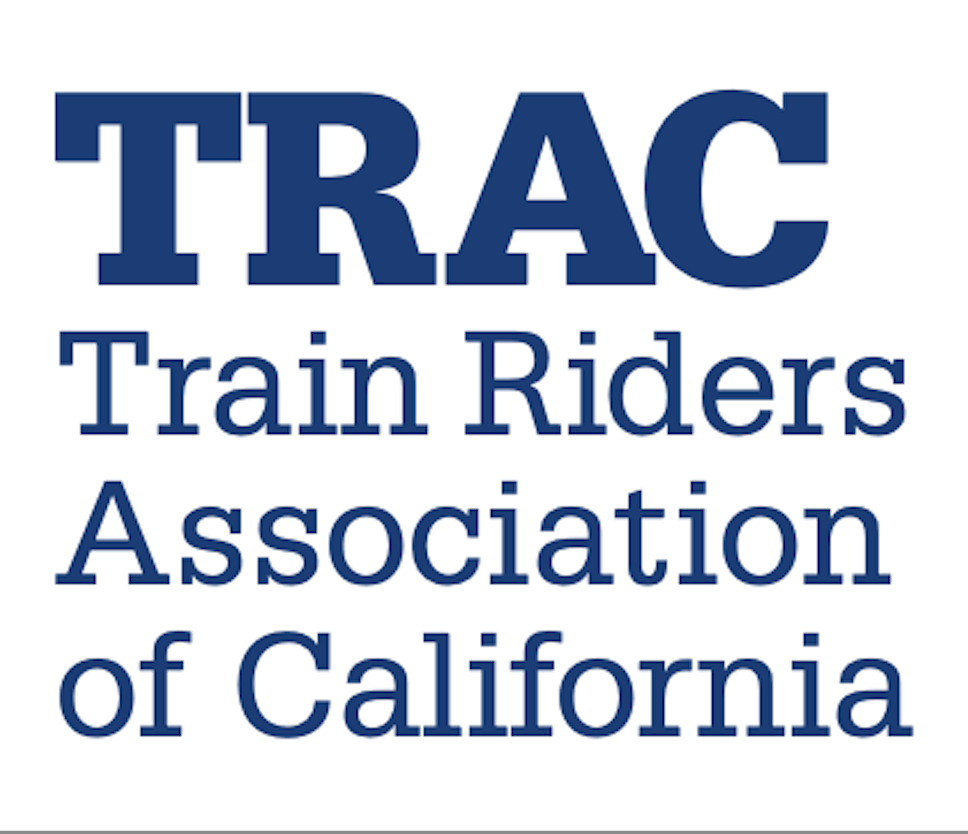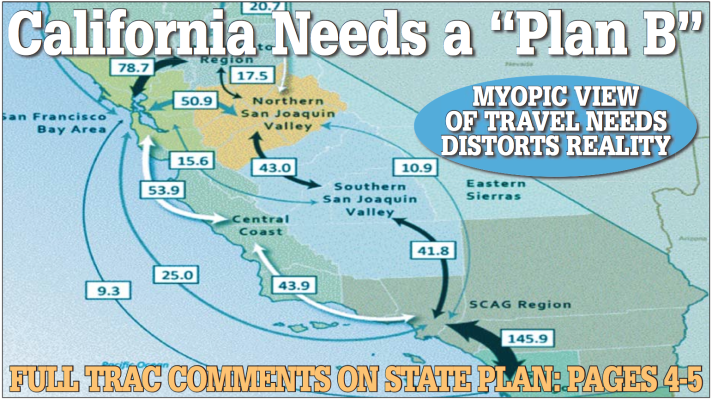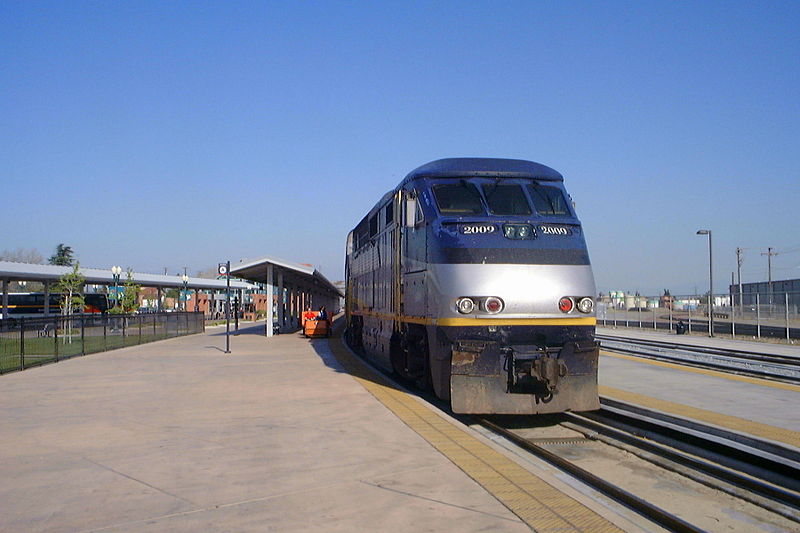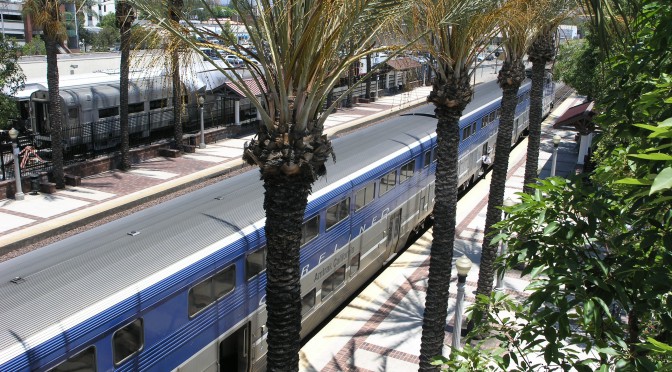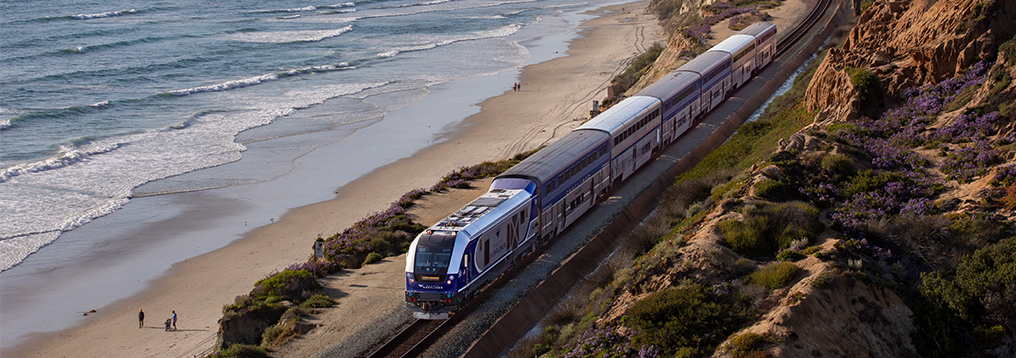SB 69 Seeks to Rip Out NWP Rails
By David Schonbrunn
David Schonbrunn is President of the Train Riders Association of California. Contact him at [email protected]
In the greatest threat to the NWP since the SP abandonment proceedings, Senator Mike McGuire, representing the North Coast has introduced the Great Redwood Trail bill, SB 69. He seeks to create the nation’s longest trail, running from Larkspur Landing in the south to Samoa in the North. The trail would run alongside SMART’s tracks, eventually all the way to Cloverdale. North of there, however, the rails would be “railbanked”–a polite term for rail removal, with the vague promise that they could be brought back at a future date because the right-of-way would be protected.
While the Train Riders Association of California is not opposed to a trail, we do note that the $1 – $5 billion cost would benefit relatively few people. With the State in fiscal crisis because of the pandemic, this trail is hardly a fiscal priority. See our letter. Here’s what we find troubling about the proposal:
Railbanking is Problematic
• Railbanking is legally suspect: Adjacent property owners can sue to eliminate the rail easement over their land once trains can no longer run. Trails are not guaranteed to preserve rail easements.
• We are unaware of any railbanked rail lines that have been restored to rail service. Trail advocates don’t like to talk about this, but railbanking appears to be a one-way street.
Railbanking Blocks New Service to Mendocino
• The North Coast Rails with Trails Coalition has identified at least 21 shippers in Mendocino County that want their businesses connected by rail to the national rail network. SB 69 calls for railbanking all the rails in Mendocino County, thereby denying them service.
• Restoration of the currently out-of-service tracks to Willits would help climate change and highway congestion by getting trucks off the highway. Replacing rotted crossties and repairing crossing signals would enable Class 3 service (40 mph for freight, 59 mph for passenger).
Passenger Service to Willits?
• Conceivably, passengers in the low-density cities to the north of Windsor could be served by the freight operator, providing convenient service connecting Willits, Ukiah, and Cloverdale to SMART at Windsor.
• Taking long-distance trips off the highway is important method of reducing GHG emissions.
• While the ride quality wouldn’t equal SMART’s, passengers rode on jointed rails for over a century.
• Lightweight European diesel multiple units have much lower operating costs than SMART’s DMUs (which would reduce the subsidy needed to make the service worthwhile for the freight operator).
• TRAC estimates that the existing 78.6 miles of jointed rails from Windsor to Willits could be brought back into Class 3 service for roughly $150 million.
• Compare that to SMART’s $264 million estimate to build 22.3 miles of tracks to Cloverdale, less than 1/3 of the distance to Willits. The difference is SMART’s gold-plated standard: By building everything new, it seeks to prevent unexpected–and unbudgeted–maintenance issues.
• Because of the urgency of climate change, TRAC believes it is critical to provide rail service now–and deal with future problems in the future.
• Building as inexpensively as possible makes it more likely to secure funding sooner.• A private-sector rail operator could potentially be motivated to invest in the capital improvements needed to restore service to Willits, as part of becoming the freight operator.
• SMART has passed on multiple offers of a TRAC presentation on rail to Willits.
Passenger Service in the Highway 37 Corridor?
• Partnering with a private-sector freight operator in this corridor could produce a low-cost passenger service that connects SMART to the Capitol Corridor Fairfield station in Solano County.
• TRAC estimates a low-cost rehabilitation of the existing jointed rail to Class 3 would cost less than $100 million, while SMART’s estimate ranges between $780 million and $1.3 billion.
• Rehabilitation would be a quick process that could provide near-term help to commuters stuck in Highway 37 congestion.
SMART as a Freight Operator?
• SMART has no institutional competence in the freight business.
• SMART does not have an entrepreneurial culture.
• Senator McGuire either doesn’t understand the financial risks of SMART becoming a common carrier, or is making sure the subject gets zero visibility in his promotion of the Great Redwood Trail.
• SMART has enough of its own serious problems without entering the freight business: the severe impact of the pandemic on its ridership, and the challenge of gaining public support for a sales tax renewal.
• With SMART high-cost design standards, the extension of service to Willits and Solano County would be infeasible if it became the freight operator.
What About Humboldt County?
• Because State policy on climate change means that Humboldt’s future transportation will need to rely more on rail, tearing out the rails is exactly backwards.
• If the rails are restored to service for freight, they could be used for passenger service as well as for tourist excursion service, a boon for the local economy.
How you can help
Please contact your Assembly member and tell him you oppose SB 69’s railbanking and transfer of freight rights to SMART: Marc Levine [415-479-4920] for Marin and Sonoma Counties, or Jim Wood [(707) 576-2526] for Sonoma, Humboldt and Mendocino Counties.
If you aren’t already a member of the Train Riders Association of California, I invite you to join us. Use the donation button to the right of this page.
